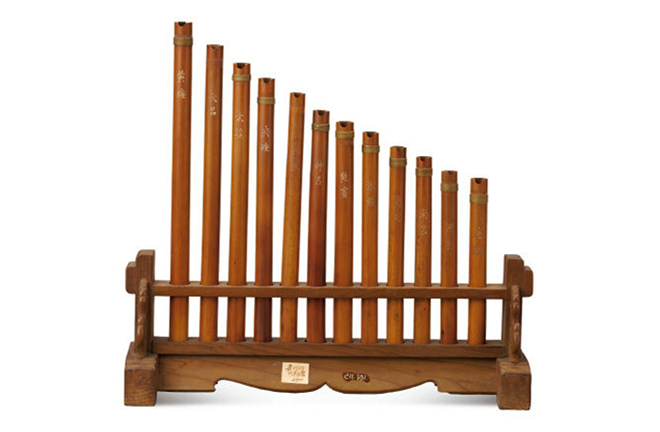Five-tone Chinese scale

A set of tuning pipes from the Qing Dynasty Photo: NATIONAL MUSEUM OF CHINA
Traditional Chinese music is based on a pentatonic scale, with the earliest record of this five-tone scale dating back 2,600 years. The notes of this scale, known as gōng, shāng, jué, zhǐand yǔ, correspond to five distinct modes: Gong mode, Shang mode, Jue mode, Zhi mode and Yu mode respectively. This pentatonic scale correspond roughly to the notes of do, re, mi, sol, la in Western musical notation. As ancient Chinese music was predominantly based on the five-tone scale, the term “wuyin” [lit. five tones] often referred to music in general. This explains the emergence of the Chinese idiom “wuyin buquan” [lit. lack of five tones], which essentially means “tone-deaf,” referring to one who cannot sing in tune or discern different musical notes.
A closer examination may reveal that most ancient Chinese music does not incorporate the “fa” and “si” scales. For example, the famous Chinese folk song “Mo Li Hua” [“Jasmine”] from the Jiangnan region, which dates back to the 18th century, does not include the scales of “fa” and “si.” The “March of the Volunteers,” the official national anthem of the People’s Republic of China since 1978, is also based on the pentatonic scale, apart from the “si” scale that only appears once at the beginning of the song. Its presence may be related to its composer, Nie Er, growing up in Yunnan Province, where pentatonic-scale based folk songs were very popular.
Edited by REN GUANHONG
